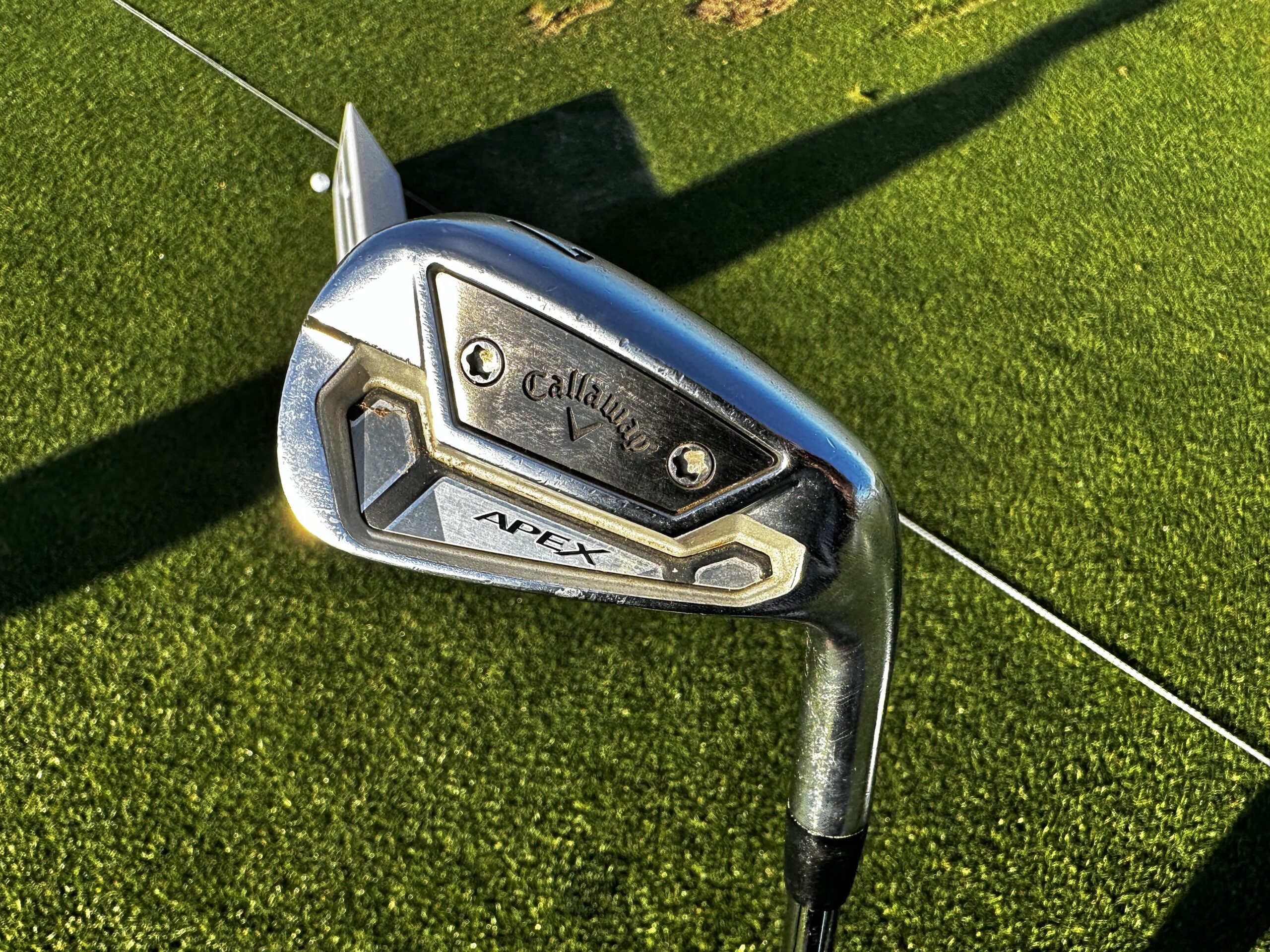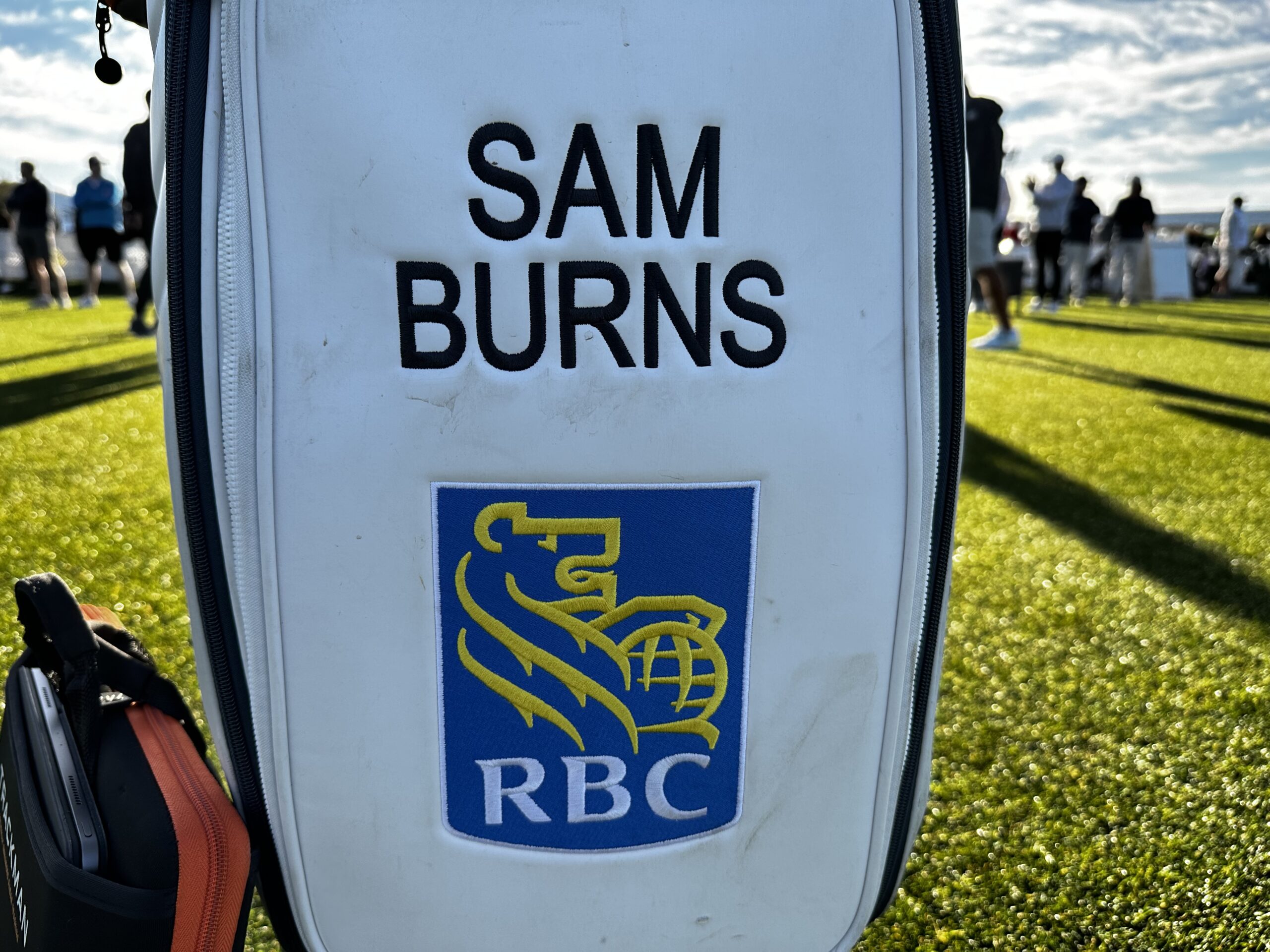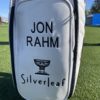
When it comes to his equipment, I would call Sam a modern player with old-school feels. I mean that Sam, along with his coach Brad Pullin, relies on launch data to inform what lands in the bag, but Sam also has an equipment sensitivity that some of the great players have. YES, the data gets him in the ballpark, but ultimately it’s in his hands where the decision is made.
As you go thru this, please pay attention to what you see in regards to what Sam is always looking for, there is a recurring theme, and it’s an important one for all of us:)
Driver: Paradym TD S (9+@10.3, N/+1 8GB, 7GF, 59 lie)
Shaft: Fujikura Ventus Blue 7TX (45 inches, Tipped .5 , D3, 198G)
*”I’m pretty slow to switch drivers and will only make the jump if there’s improvement across the board. I had a great year with the Rogue ST TD, but with Paradym, I found a tighter window down range, a bit more ball speed on mis-hits, and the sound and feel of this thing are unreal.
These days you find the improvements with equipment in the nuance, and to make my misses a bit better could mean something huge as the year goes on. It all matters, and every little thing we can add helps.“
-Sam Burns
This switch happened on #4 at Bay Hill; the first two tee shots Sam hit with the 10.5+ were in left to right cross winds that required a hard cut, and the start lines were just too far to the right, Dean Teykl (who had three heads on him while walking with Sam) took a 9+ head (9.5 actual) put the cog at +1 which squared up the face a bit and like magic Sam started hitting these HARD cuts that started slightly left of center and fell right. It was on #4 that this happened, and it was full tilt all the way through the practice round.
A quick note on the S+ head, it’s 420CC, mid-launch, mid-spin (like the Epic Speed TD and Rogue ST TD) head that’s a bit more responsive than the others. The + signifies a higher lofted version meaning it’s 9@9.5 to start, this was developed for face angles more than anything, so a player that needs a loft that sits in between can get it without adjusting the face angle OR, in Sam’s case, a 9-degree head at 9.5 close the face a hair to get a better start line and land at 10.5.
Make sense? It’s mad science y’all!!



3-wood: Paradym TD T (16, 213G, )
Shaft: Fujikura Ventus Black 8 X (43, Tipped 1.5, D3)
*This new set-up afforded Sam a couple of things that he was looking for VS his Mav 4-wood. First, he likes how the sole gets into the ground; off the ground, Sam likes to steepen his angle of attack and more or less squeeze the ball off the turf AND keep the spin in a good window. With the Mav, that shot seemed to come out a bit flat and hot (no spin) if he caught it higher on the face. Secondly, this “T” mitigates a right miss because the face angle isn’t as open (now square) as before, making it easier to turn over (with spin).



Hybrid: Callaway Apex UW (21@19.9)
Shaft: Fujikura Ventus Blue 8X (40.5, Tipped 1.5, D3)
*Sam was in a 2015 Apex Hybrid (23@20), which he was committed to, but it was limiting in regards to gapping. As he gained speed, the gapping with this club became an issue, and since the club was bent strong (open face), the launch was limited. With the UW, he could now play with a more neutral face that went further and launched higher. According to his Caddy Travis Perkins, this is #teamburns favorite club:)



Irons: Callaway Apex TCB (4-PW)
Shafts: Project X 6.5
Lofts: 4(22.2), 5(26), 6(29), 7(33.7), 8(37.1), 9(41.6), P(46)
Lies: Up 1/2 from Std.
Length: STD (38 inch 5-iron)
*Coming from Apex Pro (double dot) in 2020, Sam noticed that there were some improvements to be made to his overall dispersion. After working in the winter of 2020 with our Tour Team, he transitioned into the TCB, which improved spin, launch, and dispersion across the board. Good luck getting these outta the bag.



Wedges: Apex TCB A (50) Callaway MD5 Jaws Raw (56-10S@55, 60-12X)
Shafts: True Temper Dynamic Gold Tour Issue X100 (50) S400 (55, 60)
*Why an “A” wedge? Simple. It’s more forgiving. As a full-shot club, the “A” wedge tightened Sam’s overall dispersion on center strikes and mis-hits. The higher bounce also mitigated the digging he would sometimes get with the “S” grind 50. This is a good tip for all golfers, think about what you want the club to do (specifically) and choose based on that. It’s no different than picking a tool to do a job; they make different types of screwdrivers for a reason.
The 60/12X has been in the bag for some time. Sam prefers playing with more bounce, and the X gives him that (20 degrees of actual bounce) along with toe and heel relief for added versatility. Basically, it’s high bounce squared up and low bounce when manipulated open, stood up, or tilted heel side. Sam prefers the softer S400 shaft in the SW and LW for added spin and feel.








Putter: Odyssey O-Works 7S (3 Loft, 71 Lie, 35 Inches)
*No big story here; he’s addicted to the shape and makes everything with the 7S. I don’t recall Sam ever looking at another putter. The crisp feel of the O-works face is a feel thing plain and simple.




Ball: CSX ’20

*Sam is in the process of swapping into the ’22 version of the CSX, but when you are on a run like he is, switching balls isn’t as easy as it seems. Why CSX? SPIN, SPIN, SPIN. Sam wants it everywhere he can get it
Grips: Golf Pride Tour Velvet Align MID





















Patrick Higa
March 27, 2023 at 3:04 pm
Good report, interesting stuff.
Aside from the driver and ball, Sam seems to stick with the battle tested equipment that got him there.
Thanks, aloha from the Islands
Pat